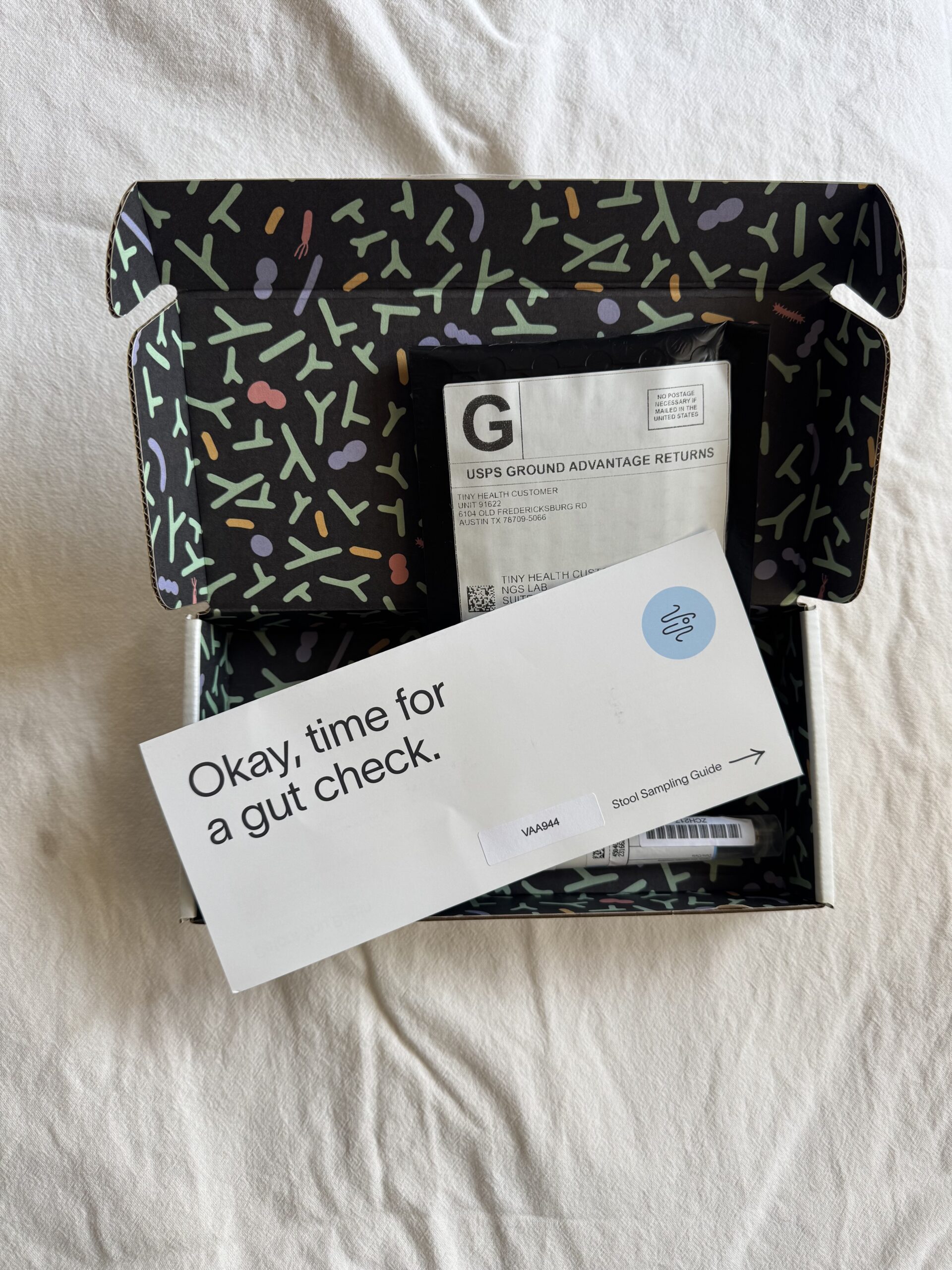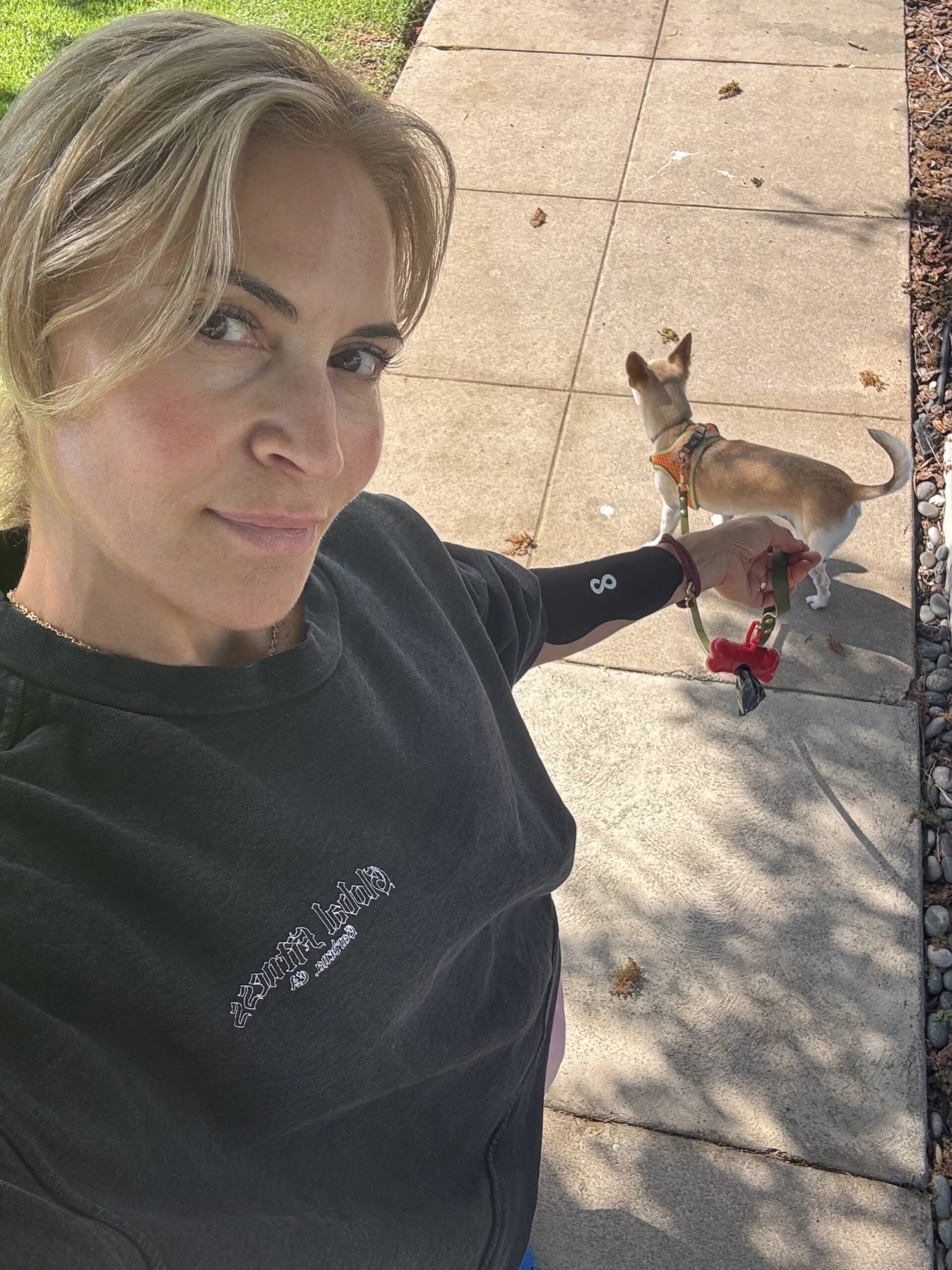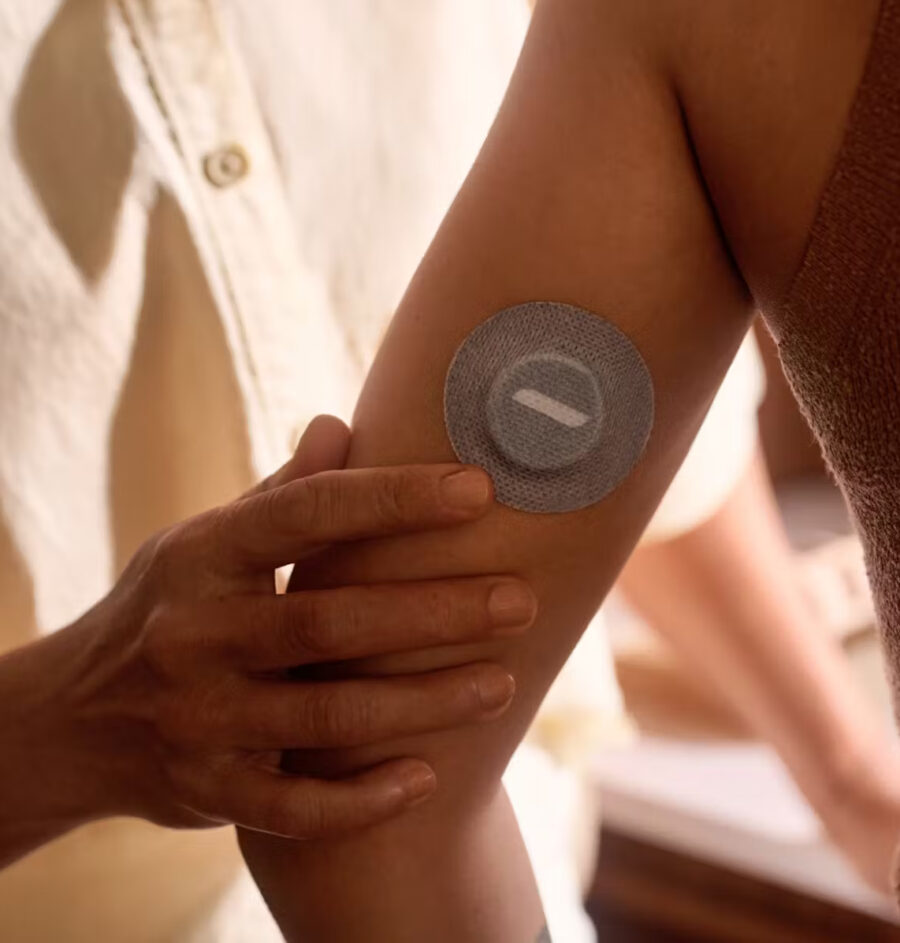
I Wore A Veri CGM For One Month To Manage My Health
Good Gear editors endorse products we’ve personally researched, tested, and genuinely love. Learn more about our methodology and business model here.
GOOD GEAR RATING — 8/10 STARS
Summary: I tried Veri to manage my hypothyroidism. After 30 days of continuous testing, I highly recommend Veri as a CGM option. It offers helpful and easy-to-understand insight into blood glucose levels and interesting data points on how food impacts overall well-being and blood sugar. The main drawbacks include cost, having to use two different apps to properly track levels, plus frequent scans of the CGM and logging foods.
PROS
- I found the CGM utterly painless and very easy to apply!
- The app is simple, user-friendly, works on iOS and Android phones, and offers insightful videos, education, and tutorials.
- There’s a lot of data to comb through from meal logging and exercise tracking to metabolic healthspan and trend data. The app offers a full scope of wellness tracking.
- The CGM and the well-being tracking component helped me integrate a mindful approach to my meals and fitness during my testing period. I found myself making more intuitive choices around meal time and enjoyed logging my workouts, so I could have a holistic and well-rounded reflection of my lifestyle choices.
CONS
- If you live in the US or the UK, you’ll need two apps to integrate the CGM into your routine: The Libre app for scanning, and the Veri app to track your CGM data (and you’ll need to log your meals, sleep, and fitness there, too). It can be cumbersome to manage two apps to accurately track data and trends.
- Prices start at $39/month (app/program usage without sensors) but can cost upwards of $139/month or more (app/program usage with sensors), which could be cost-prohibitive for some folks.
“What exactly did it mean for me to feel healthy?”
Since I was 21 years old, I’ve lived with an autoimmune condition known as Hashimoto’s hypothyroidism. Beyond taking special care to maintain my well-being, I have a pill every day for my autoimmune disease. For many years, I felt my condition was under control. I stuck to the maxim of “out of sight, out of mind” when it came to thinking about the blood sugar issues, fatigue, or brain fog that came along with hypothyroidism.
But during the last few years, I started to really dial into my health. What exactly did it mean for me to feel healthy? I noticed my symptoms of fatigue and brain fog come roaring back to the surface — and I wanted to do something about it. Plus, all of this was combined with a family history of diabetes and heart disease. So, I started to research ways to support my body. I identified my primary health goals as follows: More energy, better sleep quality, and fewer blood sugar fluctuations due to my meals.
“I identified my primary health goals as follows: More energy, better sleep quality, and fewer blood sugar fluctuations due to my meals.”
That’s how I ended up researching a continuous glucose monitor, also known as a CGM. And the one that most piqued my interest? Veri, which I had the chance to test out for 30 days. Veri’s four-pronged approach is aimed to optimize your health across food, exercise, sleep, and stress — which seemed like the right approach to better understand how my decisions were helping or hurting my preexisting condition.
Below I explain everything about Veri, CGMs, and my experience over one month of testing.
What is a CGM?
If you’re new to the world of CGMs, here’s a quick primer to bring you up to speed.
To begin, a CGM is a small device or a wearable sensor (that’s about the size of a half-dollar coin) that is applied directly to the skin, usually the backside of the arm. What does it do? Well, a CGM monitors your blood glucose levels throughout the day. You most likely recognize the look of it from the diabetics in your life.
“A CGM is a small device or a wearable sensor (that’s about the size of a half-dollar coin) that is applied directly to the skin.”
Johnson explains, “A CGM sits on your skin, while a small filament sits just below the skin.” In other words, a teen-tiny needle is in the wearable (seriously, it is *really* thin and small) then pierces the top layer of skin and retrieves glucose levels present in the interstitial fluid. The data from your CGM appears in an app — and in the case of Veri, they translate it into actionable feedback on your meal and lifestyle choices and then guide you to make improvements.
If you’re wondering how that can assist in your health goals, let’s return to Johnson: “Wearing a CGM helps you understand where you fall on the metabolic health spectrum and take action toward better health before you’re farther down the road to developing a chronic condition,” she says. “For every minute, day, and week, you can see how small choices impact how you feel, longevity, and health span.”
Which Veri plan is right for you?
Veri has two sensor plans for you to choose from: Intermittent Monitoring or Continuous Monitoring. With Intermittent Monitoring, you’ll receive 4 sensors and 4 months of app access. That’s 1 sensor, or 14 days of tracking, per month. This can be a solid option for tracking newbies (like me), because folks have more time to integrate everything you’re learning. It also helps spread out the cost over a longer period if they choose to pay in installments. This can be helpful for those who have big improvements to make.
“Veri has two sensor plans for you to choose from: Intermittent Monitoring or Continuous Monitoring.”
As for other pricing models, the company’s intermittent monitoring starts at $139 per month and continuous monitoring will cost $299 per month. (FYI: The app-only plan is $39 per month.)While the CGM can be an impactful experience, it can be costly. First, the Veri wearable device may or may not be covered by an individual’s HSA/FSA plan and a prescription is required. The lowest subscription model is $39 per month and the highest is $229 per month.
First things first, let’s take a look at the brand behind the CGM. The Helsinki-based company was founded in 2019 by Anttoni Aniebonam and Verneri Jäämuru. (Interesting fact: Veri means blood in Finnish!) Founded under the North Star of empowering people who feel a lack of agency when it comes to metabolic health, the co-founders designed an innovative yet simple system that anyone — regardless of their knowledge base — could navigate in their day-to-day life.
Essentially, the Veri app and CGM program brings together insightful data and patterns: Track your blood sugar, sleep, food, and activity data for an established snapshot of your habits and meals. This means, you’ll input your data on the daily (i.e. tracking every meal and activity), monitor your glucose (via wearing a CGM device), and the Veri app will score all your meals based on your blood sugar response and the quality of ingredients. And as you continue tracking, the app works to provide personalized insights based on your unique patterns and lifestyle. Pretty neat, huh?
“As you continue tracking, the app works to provide personalized insights based on your unique patterns and lifestyle.”
Research Lead at Veri, Emily Johnson, MS, RD says that Veri was “developed with support from our advisory board; which includes scientists from Harvard, Duke, Stanford, and the CDC.” The expert input doesn’t stop there. Johnson notes, “We also have direct input and guidance from physicians and registered dietitians on the development of features, education, and so on.”
The brand makes an admirable effort to provide equitable access to science and technology — and its product, which harmonizes physical health with data and technology, is both fascinating and game-changing. More on that below.
Getting started
Getting started with Veri is a snap. I filled out a brief health survey for physician approval (from the Veri staff) and set up an account in the app. The survey was simple and direct, and I was guided to share my health goals for the Veri device, too.
I selected these two goals: 1) Learn more about my glucose levels (I never considered them before!) and 2) Look for patterns that could be impacting my hypothyroidism.
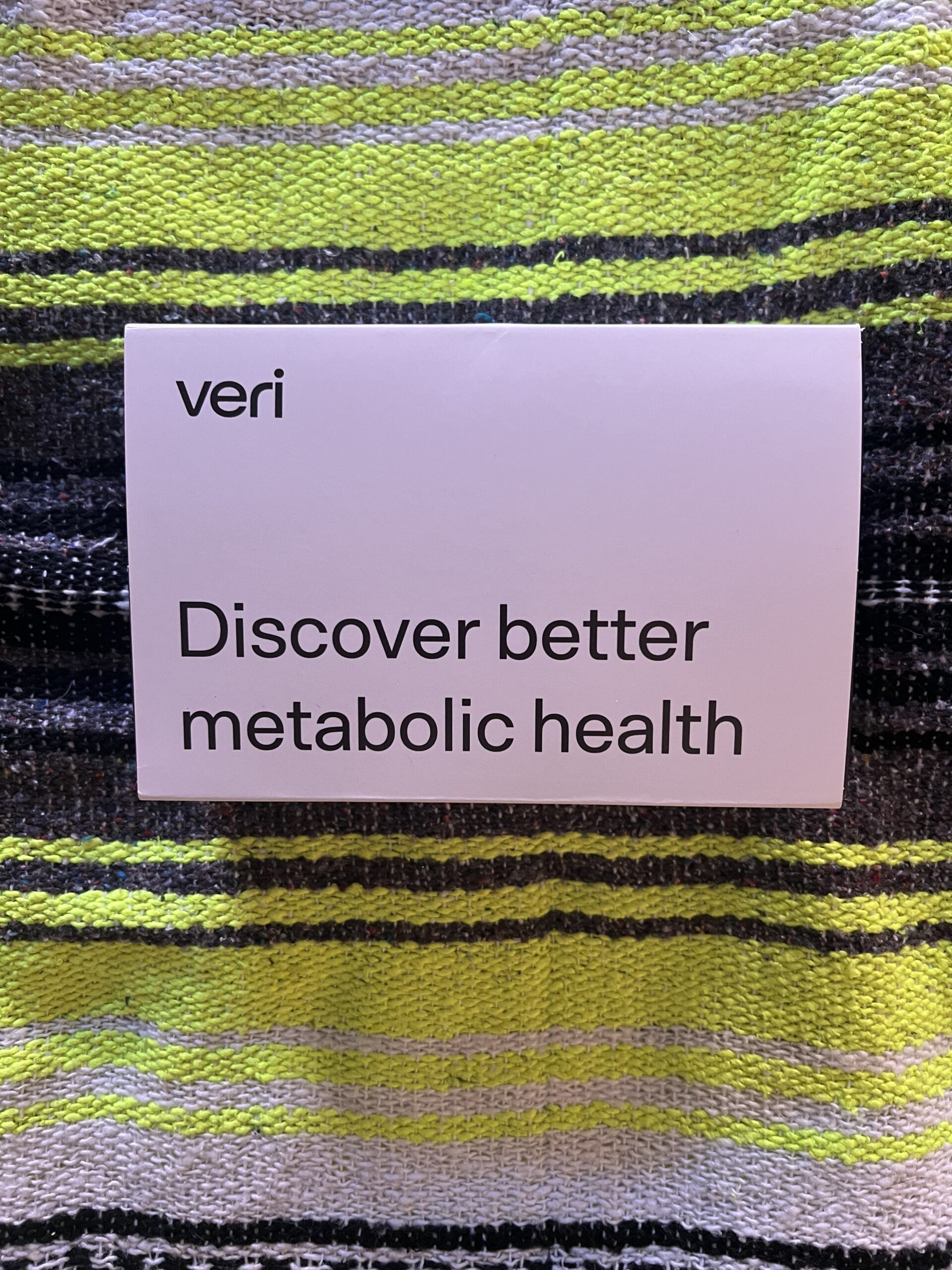
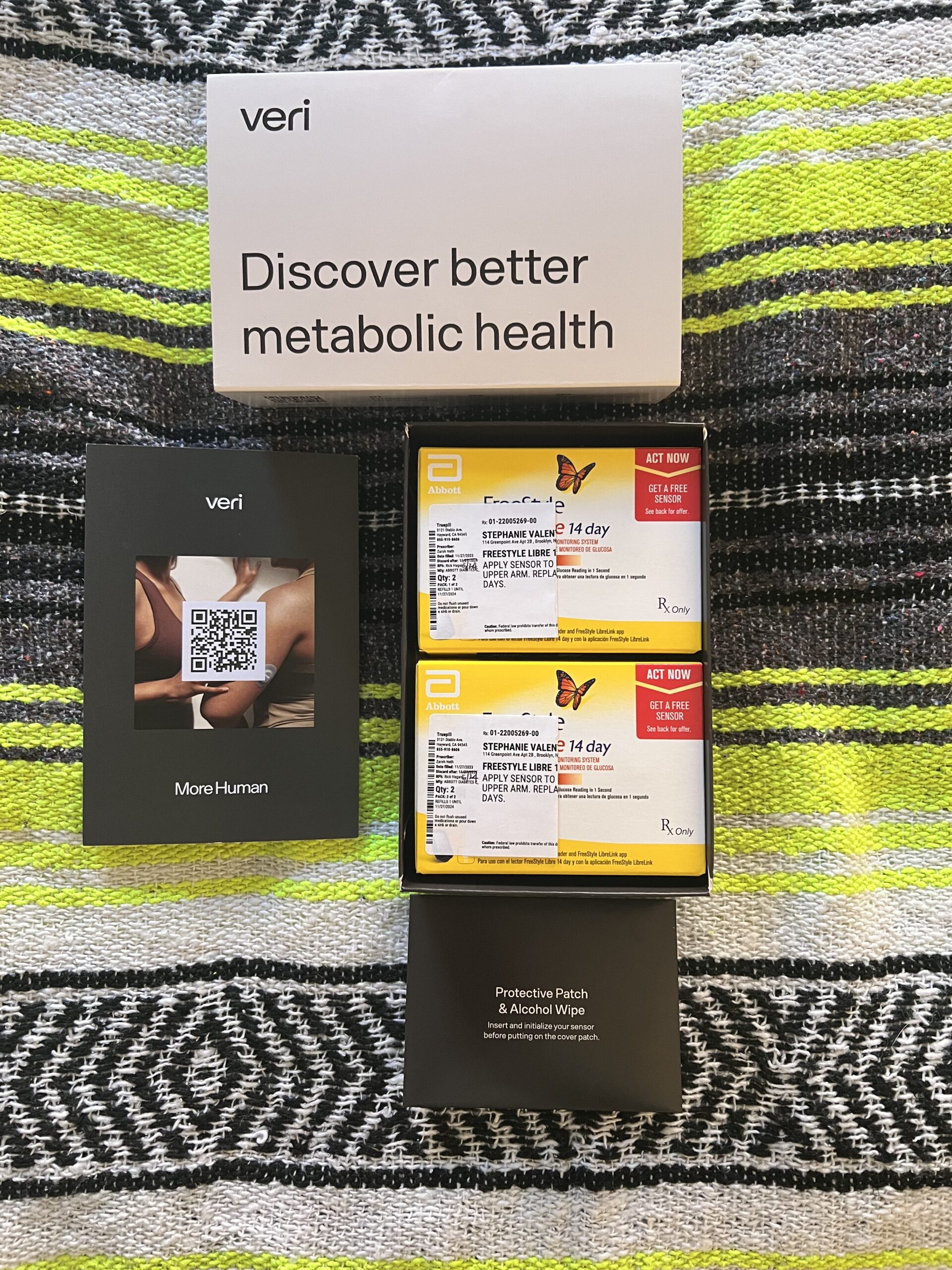
Staying on top of my thyroid function while being mindful of my family’s history of diabetes was very important to me. Johnson helped to explain, “Research shows that diabetes and thyroid dysfunction are closely linked, so keeping an eye on blood sugar trends may be helpful for alleviating hypothyroid symptoms and keeping energy levels consistent.”
My prescription was approved in about 48 hours. When the wearable device arrived a few days later, unpacking was easy. With a short instruction guide in-app, getting set up took only a few moments.
Application
Applying the Veri CGM was so easy to do on my own and I didn’t even feel the needle pinch my skin.
I cleaned the back of my arm with the provided rubbing alcohol swab, and followed Veri’s instructions to apply the device. Then, I placed a gray sticker over the sensor to keep it in place for the next 14 days.
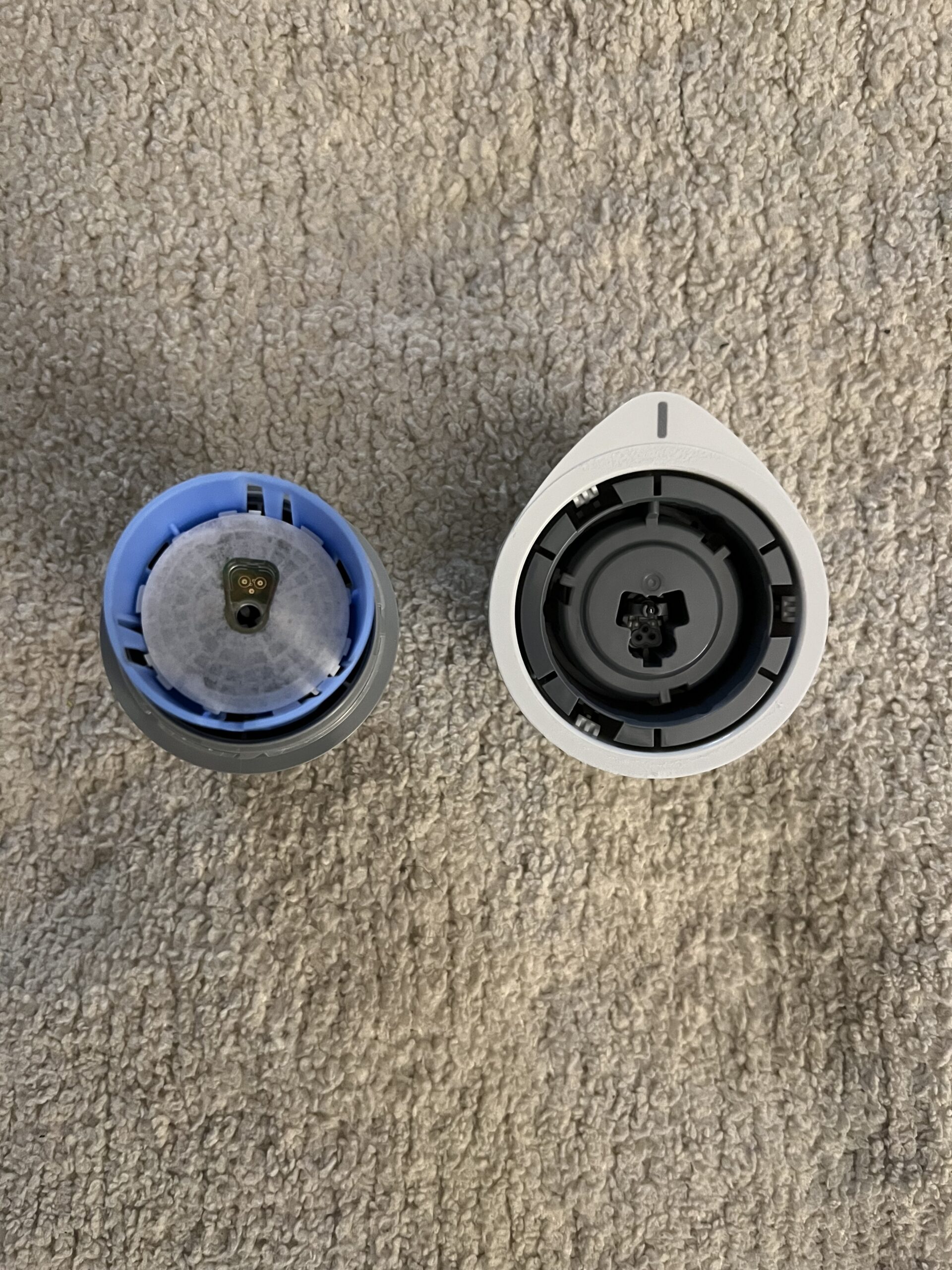
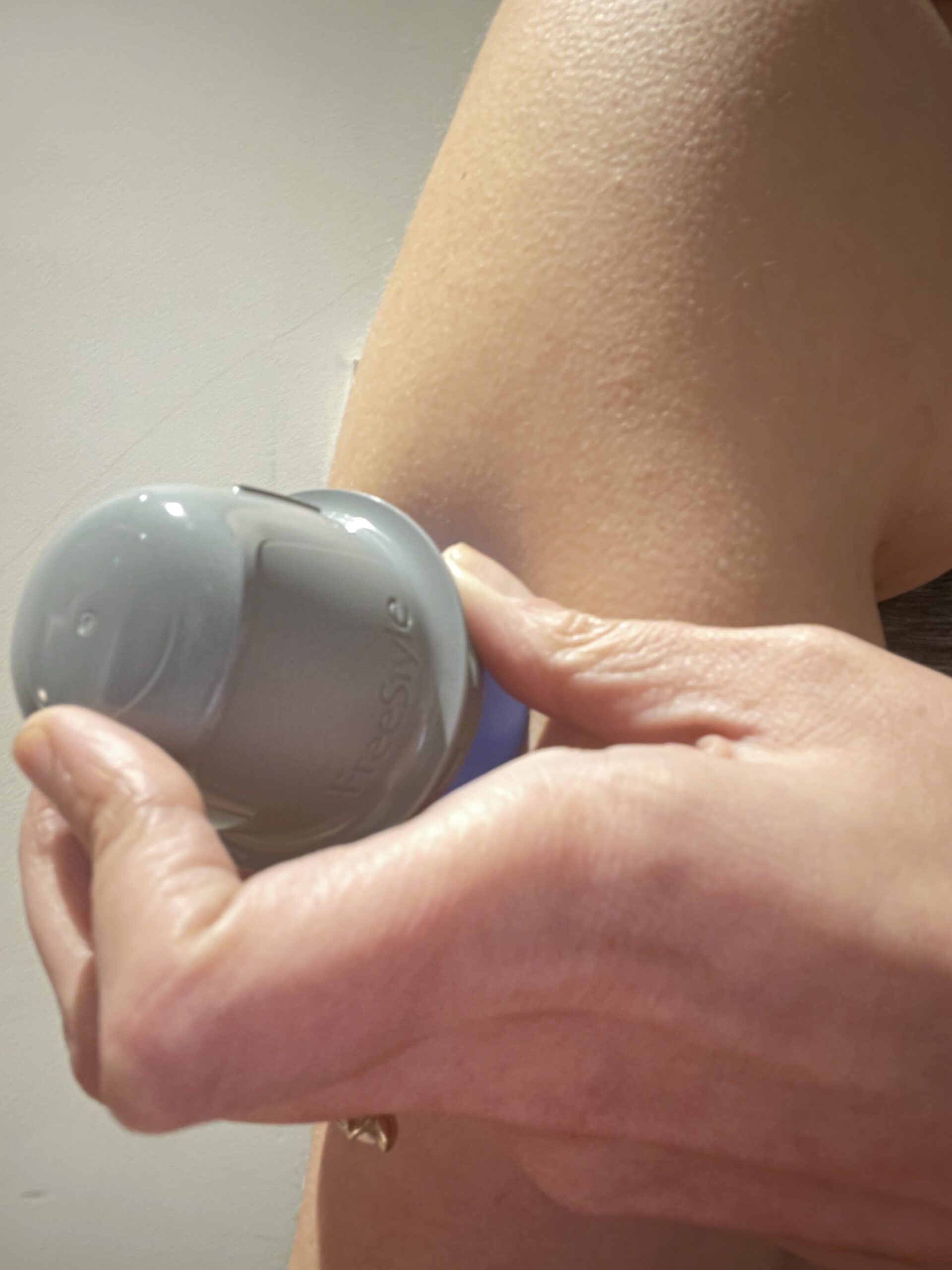
Note: The sticker can get easily wrinkled if put on hastily and it’s recommended to let the adhesive set for up to two hours before showering. Worried about the sticker coming off? Don’t be. With a good application, it’s sweatproof and waterproof. In fact, the sticker didn’t budge in the shower or at the gym until I took it off two weeks later.
Tracking my levels using Veri
Kicking things off in my glucose journey involved using two apps on my phone: Veri and Libre Link. Since I’m based in the States, I needed these two apps to integrate the CGM into my regimen: the Libre App was for scanning, while my CGM data populated in the Veri app (and I logged my meals, sleep, and fitness here, too). It felt a bit cumbersome to scan my wearable device and then check my data or look at trends in a separate app, but I got used to it.
My initial use came about after the revelry of the holidays recently passed, so I was excited to see how my typical meals had an ongoing impact on my body. A few things about my eating routine that you should know: 1) I take a pill for my thyroid first thing upon waking, 2) Because of said pill, I cannot eat or drink anything — unless it’s water — for a full hour, and 3) I practice intermittent fasting and eat my first meal of the day between 12–1 p.m. and eat my second (and last) meal of the day between 5–6 p.m.
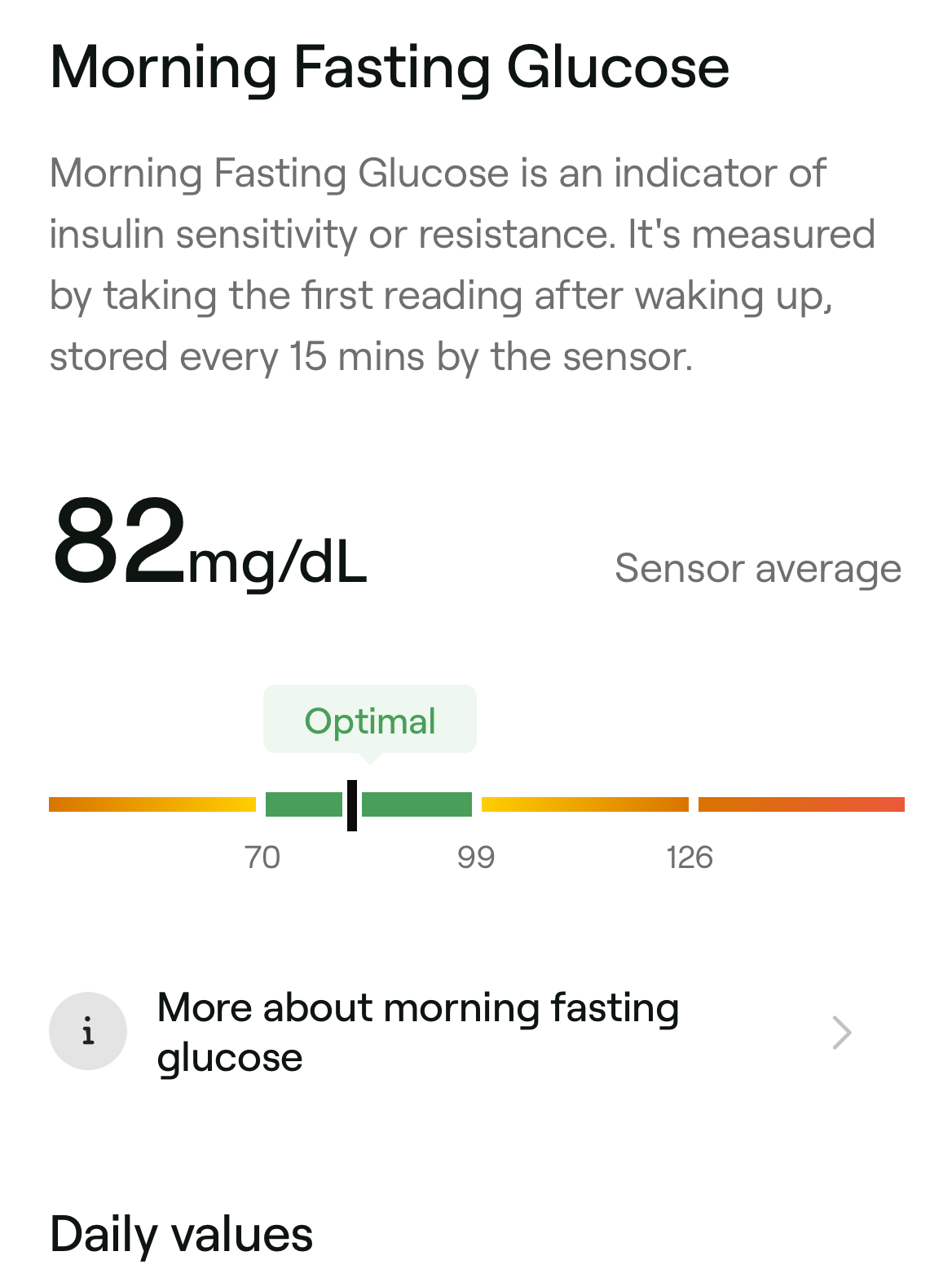
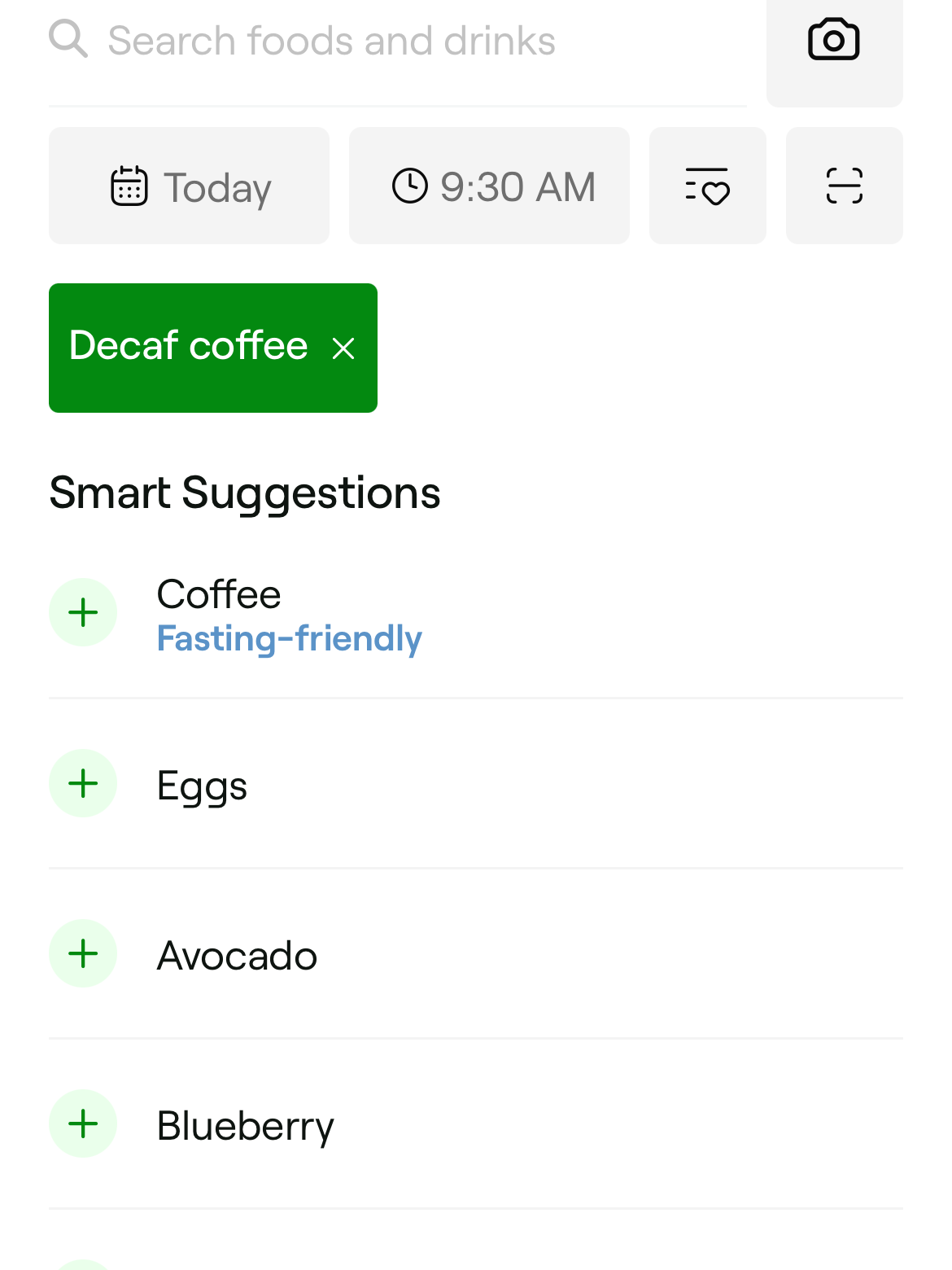
In my early hypothesis, I expected to see my glucose rise from using monk fruit in my morning coffee. So, I was intrigued when I saw that my levels didn’t spike. I could continue right along with my sweet cold brew routine! This was all super easy to track because, rather than needing to gain an understanding of healthy glucose levels, the app translates this into easy-to-understand language.
Other notable observations? My seemingly “random” bouts of afternoon fatigue were tied directly to a carb-dense lunch. While I assumed my levels might be inconsistent, the data revealed that I maintained a steady range (outside of the occasional carb-y meal which led to spiking). This means that when Veri revealed my metabolic health plan, my path was on the way to leading an extra five years of metabolic health.
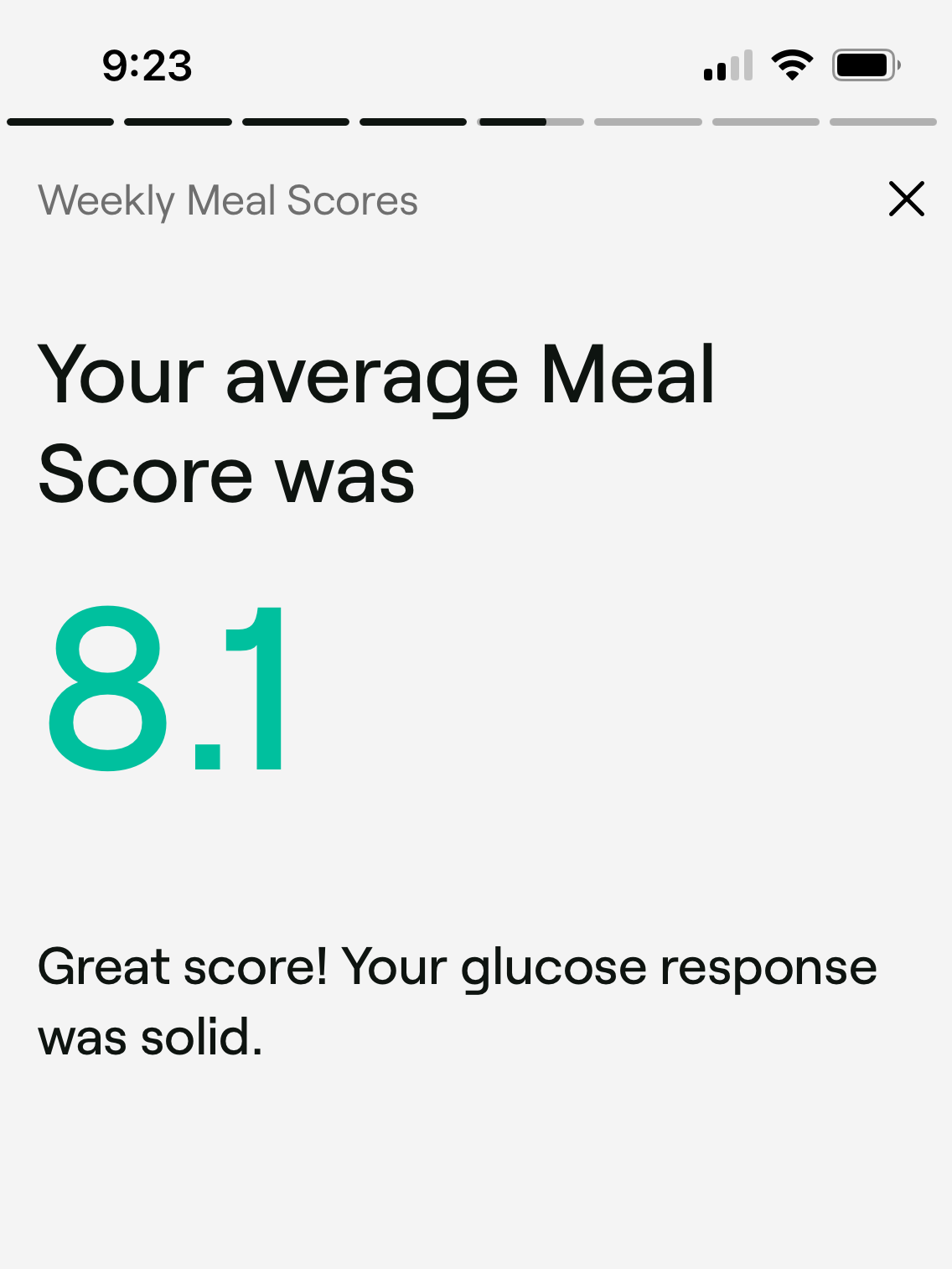
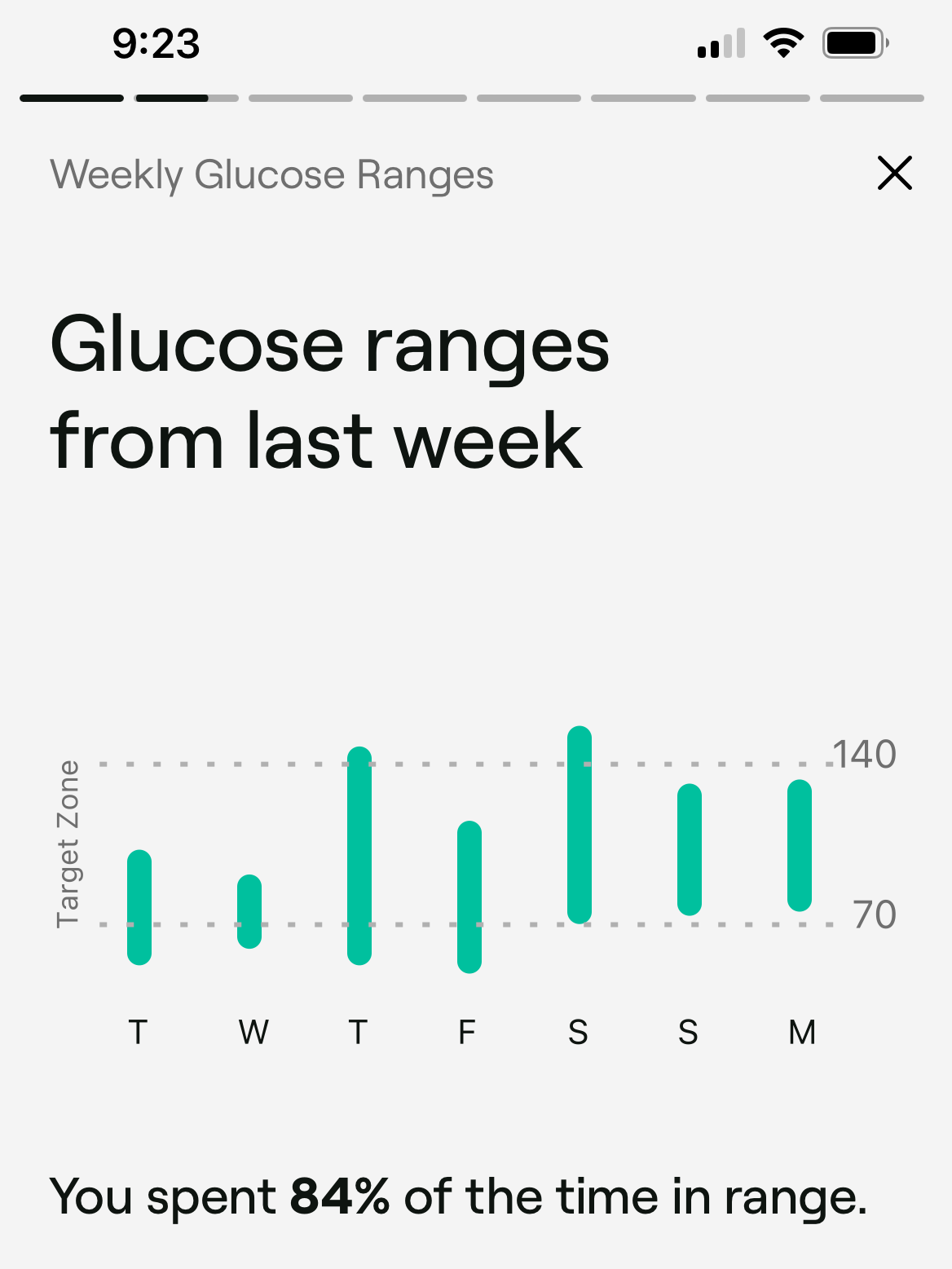
These results made me more confident in my choices as a whole and made me realize that I might be more sensitive to certain food ingredients, like carbs, that could potentially trigger fatigue or brain fog faster and more easily. I started to constellate my symptoms, like fatigue, with my blood glucose levels as revealed by Veri — here’s how it looked over the next 30 days.
The next 30 days
I used the Veri CGM device for one month. Here’s what I noticed:
- My morning cup of decaf or French mint tea didn’t spike my glucose, even when I used monk fruit sweetener (and it was overall logged as an optimal choice).
- My Friday night hang with some friends and a few glasses of Prosecco really impacted my sleep, as evidenced by a glucose spike and a shorter sleep window. (Yes, the CGM can help you understand your sleep habits, too!)
- It moved me to be nicer to myself. Seriously. Upon reviewing my tracking logs and analyzing my glucose data, I realized that I engage in negative self-talk easily when it comes to living a healthy but realistic life. AKA, I always assume the worst and don’t think particularly highly of my choices. But, the buck stops here. My choices are fine and the app and CGM made me adopt a more neutral stance towards my habits.
- I walk a lot, but it ends up being occasionally across a long day (think, multiple dog walks and strolls to clear my head during the day). As a result, I expected my exercise range to stay in the high end, but my personalized data showed that I was in an average range. Surprising, though helpful data all in!
- Logging my meals in Veri was helpful but a bit tedious because I already use a separate app to track my meals for general health, and it felt repetitive. The Veri app also didn’t feel as comprehensive when it comes to portion size or amount of nutrients — especially protein or sugar — eaten.
Final thoughts
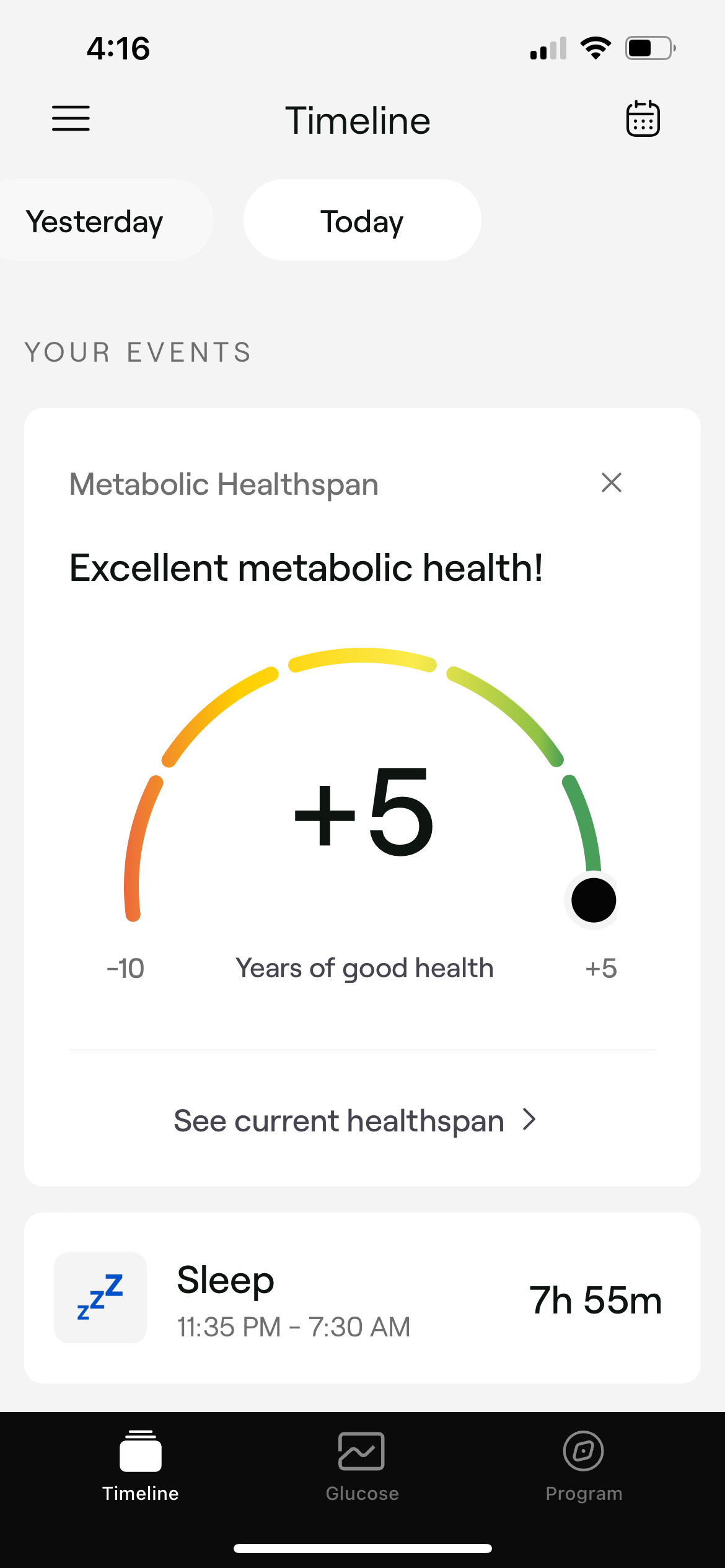
I found Veri to be a great experience for a beginner, if you’re new like me to the CGM game. I really enjoyed that the app doesn’t give out grades or number scores related to food (which can be triggering for some folks) but instead categorizes food as “Optimal,” “Moderate,” or “Avoid.” (I do want to touch on the word “Avoid” for a moment because that can cause negative behavior patterns or anxious spirals. I don’t believe it’s necessary to avoid a food you enjoy in moderation.)
On the other hand, even though using two apps every day several times a day was bulky, the user experience was smooth and generally easy to navigate. I also found the Veri tutorials and insights to be very helpful and made the app experience truly unique. I learned that I can be conscientious about my health care while living my life — the app and the CGM provide insights that can empower me to make more informed choices as I move through the world. Having a granular look at my health made me feel empowered making real-time health decisions (like, prepping my lunches for the week).
“I learned that I can be conscientious about my health care while living my life — the app and the CGM provide insights that can empower me to make more informed choices as I move through the world.”
Depending on a person’s health goals, a CGM can be a valuable resource in conjunction with other medical professional services like working with health specialists (in my case, an endocrinologist) to capture data that can support well-being. For me, I found it valuable to capture this data as I also get my blood tested every three to six months for my endocrinology follow-up appointments. I can show the data to my healthcare specialist and it can help us look at it as a starting off point for my well-being.
Overall, I found the device and the app easily to use and it didn’t take up too much mental real estate in my day. I could see myself integrating the CGM device into my well-being routine for insightful data points that can be used to elevate my general self-care. Essentially, the CGM could be a valuable first step in monitoring levels and health and could be the first signs that point to positive — or potentially concerning — health changes that I want to work with a doctor on.
And, if you’re simply curious about how your behaviors around food, sleep, stress, and exercise are all interacting, Veri certainly provides a way to better understand and manage your health.
Stephanie Valente is a Contributing Editor at Good Gear and The Good Trade. She is also a copywriter and editor covering wellness, commerce, lifestyle — and more — for publications like Brooklyn Magazine and The Good Trade. Based in Brooklyn, she’s often writing poetry, getting lost in a book, or hanging out with her dog.

